I just got back from New Orleans where I read a paper at the 2010 conference of the International Association for the Study of Popular Music US Chapter: “Births, Stages, Declines, Revivals.” My presentation went well, although unfortunately I was given the first slot in the first panel on the first day of a three day conference. (8:30 AM on Friday morning!) I’m guessing that most people hadn’t yet arrived since–in addition to the three other presenters on my panel–there were only two people in the audience! Oh well.
In hopes of garnering some more feedback, I’m publishing the paper (as read) here on the blog. As usual, this remains a work in progress.
Click here to download a PDF version of the paper. (Slides and visual examples appear at the end of the PDF.) Or, follow the jump to read the html version.
Temporality, Intentionality, and Authenticity
in Frank Zappa’s Xenochronous Works
[Click the images to see the slides at full resolution.]
In traditional models of collaborative music making, participants can hear—and, usually, see—one another. Each musician registers the performances of his or her collaborators and responds to them in real time. Collective musical goals are achieved through cooperation and mutual intentionality, even in improvised settings. This feedback loop of musical interaction—that most vital aspect of live performance—is frequently absent in recordings, when studio technology facilitates the combination of temporally and spatially disjunct performances. Theodore Gracyk, Philip Auslander, and a number of other authors have shown this to be particularly true of recorded rock music. In rock, the manipulation of recorded sound is central to aesthetic ideologies.
Lee B. Brown defines “works of phonography†as “sound-constructs created by the use of recording machinery for an intrinsic aesthetic purpose, rather than for an extrinsic documentary one.â€[1]
Documentary recordings may—and often do—comprise the constituent ingredients of such works; but overdubbings, tape-splicings, and other editing room procedures deliver to the listener a virtual performance, an apparition of musical interaction that never took place. Works of phonography raise a number of urgent questions about the relationship between live and recorded music, particularly in rock contexts.
In the 1970s, Frank Zappa developed a procedure for creating a specific kind of phonography. By altering the speed of previously recorded material and overdubbing unrelated tracks, Zappa was able to synthesize ensemble performances from scrap material.
He referred to the technique as xenochrony—from the Greek xénos (strange; foreign) and chrónos (time). Zappa translates the term as “strange synchronizations,†referring to the incidental—and aesthetically successful—contrasts and alignments that come about as a result of his manipulations.
Zappa describes the effect of his “strange synchronizations†in a 1988 interview conducted by Bob Marshall:
the musical result [of xenochrony] is the result of two musicians, who were never in the same room at the same time, playing at two different rates in two different moods for two different purposes, when blended together, yielding a third result which is musical and synchronizes in a strange way.[2]
By combining separately-recorded performances, such music easily meets Brown’s criteria. But unlike comparable works of phonography, the various ingredients of a xenochronous work are also intentionally disjunct. Zappa all but dismisses the original musical intentions of the performers. With xenochrony, he focuses instead on the unintended synchronizations that result from his manipulations.
In many cases, rock artists and producers mask their methods. Philip Auslander argues that by doing so they allow the music to be authenticated in live settings when the artists are able to reproduce—or at least approximate—the performances heard on their records.[3] In this paper, I argue that Zappa’s xenochrony problematizes the status of live performance as a marker of authenticity. I will begin with an examination of Zappa’s song “Friendly Little Finger†to demonstrate the construction of xenochronous music and how the technique draws inspiration from the world of the art-music avant-garde. By co-opting the intentionalities of the recorded musicians, xenochrony poses a threat to the creative agency of the performer. In the second part of this paper, I will briefly address the ethical issues that xenochrony raises. Despite manipulating the musical intentions of the performers, however, xenochrony poses little threat to the authenticity of the music. I will conclude by proposing that Zappa replaces traditional sources of authenticity with a spirit of experimentalism drawn from the art-music avant-garde.
I. Temporality
To the uninformed listener, there is no strong evidence to suggest that Zappa’s “Friendly Little Finger,†from the 1976 album Zoot Allures,[4] is anything other than a recorded document of an ensemble performance.
The piece begins with a brief introduction featuring a repeated riff performed on guitar, marimba, and synthesizer. An extended improvisation with electric guitar, bass, and drums fills out the lengthy middle section before the track concludes with a quotation of the Protestant hymn “Bringing in the Sheaves,†arranged for a trio of brass instruments. Despite its apparent normalcy, however, “Friendly Little Finger†combines materials from four distinct sources spanning three years of Zappa’s career.
The primary recording—a guitar solo with a droning bass accompaniment—was recorded in the dressing room of the Hofstra University Playhouse as a warm-up before a performance on October 26, 1975. Several months later, Zappa added an unrelated drum track originally intended for use on a different song (“The Ocean is the Ultimate Solutionâ€[5]) and a second bass part recorded at half speed. These three recordings, all appearing in the middle solo section, comprise the xenochronous core of the piece. To this, Zappa superimposed two additional recordings. The introduction comes from the same session as the added bass part, and the coda was recorded several years earlier, during a session for the song “Wonderful Wino.”
As Example 1 makes clear, the result of Zappa’s editing is a moderately dense network of temporally disjunct recordings. How is it that such seemingly disparate recordings happened to come together in this way? What inspired Zappa to take such an approach to manipulating recorded sound? Of course, examples of overdubbing in American popular music can be found at least as far back as the 1940s—recall Sidney Bechet’s One Man Band recordings in which each instrument was performed separately by Bechet himself. But while such tricks had become old hat by the mid 1970s, xenochrony stands out for it also has obvious ties to the twentieth-century art-music avant-garde.
Despite his continuing reputation as a popular musician, Zappa was remarkably well read in the theoretical discourse surrounding avant-garde art music, particularly with regards to musique concrète and tape music. He expressed an ongoing interest in John Cage’s chance operations, for example, trying them out for himself by physically cutting recorded tapes and rearranging the pieces at random for the 1968 album Lumpy Gravy.[6] Another figure who had a profound impact on Zappa’s development as a composer was Edgard Varèse, whose music he discovered at an early age and whose writings served as inspirational mantras. Given this fascination with the avant-garde, xenochrony may be best understood as a conscious attempt by Zappa to model himself on these influential figures. His own approach to music and composition would therefore require an analogous theoretical foundation.
Xenochrony is closely tied to Zappa’s conception of temporality. Zappa often described time as a simultaneity, with all events occurring at once instead of chronologically. Toward the end of his life, in an oft-quoted conversation with cartoonist Matt Groening, Zappa explained that the idea was rooted in physics:
I think of time as a spherical constant, which means that everything is happening all the time. […] They [human beings] take a linear approach to it, slice it in segments, and then hop from segment to segment to segment until they die, and to me that is a pretty inefficient way of preparing a mechanical ground base for physics. That’s one of the reasons why I think physics doesn’t work. When you have contradictory things in physics, one of the reasons they became contradictory is because the formulas are tied to a concept of time that isn’t the proper model.[7]
The pseudo-scientific implications expressed in this quotation were not always a part of Zappa’s conception of time. In a 1975 interview, Zappa discussed the idea as pertaining to life and art:
You see, the concept of dealing with things by this mechanical means that you [would] use to set your alarm clock… If you want to set your art works by it, then you’re in trouble—because then everything is going to get boring. So I’m working on a different type of a time scale.[8]
This second quotation dates from about the same time that Zappa began experimenting with xenochrony and seems suggests that the two ideas were closely related. Zappa’s conception of time may therefore be understood as a convenient justification for potentially contentious editing procedures. Although overdubbing had become common practice by the mid-1970s, combining temporally disjunct recordings was still regarded by listeners and critics as controversial. By reconfiguring the very concept of time, Zappa skirts the issue.
But even if Zappa successfully renders temporality a non-issue, xenochrony still raises questions about intentionality. Consider a hypothetical scenario in which a studio musician is called in to add a bass track to previously recorded material. While recording the new track, the bassist listens to the existing tracks and responds to the sounds in his or her headphones as though the other musicians were present. (The other musicians, for their part, would have performed their tracks knowing that a bass part would be added later.) Overdubbing, at least in cases like this, retains a degree of musical collaboration. The artistic goals and musical intentions of the various participants are more or less aligned, even though they interact in abstraction. Xenochrony, however, dispenses with intentionality altogether. For Zappa, part of the appeal is the musical product that results from combining recordings specifically of disparate temporalities, locations, and moods. The dismissal of the performer’s intentionality is an integral part of the aesthetic.
II. Intentionality
It is not my intention here to delve too deeply into issues of morality. Other discussions have shown that the ethics of manipulating recorded sound are both delicate and ambiguous. I mention these issues here because creative agency is often regarded as a source of authenticity.
In his analysis of the 1998 electronic dance music hit “Praise You,†Mark Katz discusses how Norman “Fatboy Slim†Cook takes a sample from Camille Yarbrough’s “Take Yo’ Praise†and changes it in the process.[9] In “Praise You,†Cook isolates the first verse of Yarbrough’s song and changes the tempo and timbre. Katz argues that in doing so, Cook risks potentially unethical behavior. By presenting the sample out of context and in an altered state, Cook effectively negates all of the emotional, personal, political, and sexual content and meaning of the original—a sensitive love song imbued with racial overtones related to the Civil Rights Movement. Cook therefore presents a threat to Yarbrough’s artistic agency. Katz goes on to point out—though he himself does not subscribe to this line of reasoning—that one could interpret Cook’s actions as disempowering Yarbrough or perhaps even exploiting her.
Zappa takes similar risks with xenochrony. Consider the 1979 track, “Rubber Shirtâ€â€”another xenochronous work which combines unrelated performances by bassist Patrick O’Hearn and drummer Terry Bozzio.
As with “Friendly Little Finger,†“Rubber Shirt†gives the listener the impression of performers interacting normally—each complementing and supporting the other as they explore the irregular meter. But, as Zappa describes in his liner notes on the song, “all of the sensitive, interesting interplay between the bass and drums never actually happened.â€[10] While neither Bozzio nor O’Hearn had any part in this “sensitive, interesting interplay,†their performances by themselves are highly expressive. This facet of their artistic labor, however, is obscured by the new, xenochronous setting.
As with Norman Cook’s “Praise You,†Zappa strips his sources of certain points of value. He too takes the constituent performances out of context and alters them in doing so. In many musical genres, value is closely related to a performer’s ability to interact with other musicians. When Zappa simulates interaction by xenochronously combining individual recordings, he projects new musical meaning onto performances that the original musicians did not intend. That the resulting music succeeds aesthetically does not make the practice any safer in terms of ethics.
Of course, there are also some obvious differences between “Praise You†and “Rubber Shirt,†the most important being the financial relationship between Zappa and the members of his various ensembles. O’Hearn and Bozzio were paid employees, hired to perform Zappa’s music. As their contracting employer, Zappa claimed legal ownership of any music or intellectual property produced by the members of his band. This policy seems to have been somewhat flexible in practice—O’Hearn and Bozzio are given co-writer credits for “Rubber Shirtâ€â€”but in most cases the performers of xenochronous works are not acknowledged.
Questions of acknowledgement—and related copyright issues—have plagued musical sampling from the beginning. But again, xenochrony complicates the issue. Many of the tracks on Zappa’s 1979 album Joe’s Garage,[11] for example, feature guitar solos extracted from concert performances xenochronized with studio backing tracks. All of the audible musicians are credited in the liner notes. But what of the musicians that aren’t audible? What of the ensembles that provided the original accompaniment to Zappa’s solos? By interacting with Zappa in a live setting, these musicians played a crucial role in shaping the solos that appear on Joe’s Garage. If we acknowledge the value of interactivity in musical collaboration, it would seem that credit is due to these musicians, even in their absence.
III. Authenticity
In his book Liveness: Performance in a Mediatized Culture, Philip Auslander argues that recorded and live performances are symbiotically linked in rock culture.[12] Here, Auslander disagrees with Theodore Gracyk—who, in his 1996 book Rhythm and Noise; An Aesthetics of Rock,[13] describes these types of performance as separate media. Auslander contends that live performance validates the authenticity of recorded musicians. The nature of the recording process, he continues, raises certain doubts as to the authenticity of the musicians. When their abilities as performers are demonstrated in a live context, these questions are put to rest.[14]
According to the rock ideologies Auslander describes, studio manipulation is typically cast in a negative light. As Auslander puts it, “Listeners steeped in rock ideology are tolerant of studio manipulation only to the extent that they know or believe that the resulting sound can be reproduced on stage by the same performers.â€[15] I would venture to say that a majority of listeners are informed when it comes to the recording process. Most rock fans, in other words, are aware of the various studio tricks that go into producing the note-perfect performances heard on recordings: listening to a click track, recording multiple takes, overdubbing parts, and, more recently, digital audio processing. Except in some cases, where the technical characteristics of the music would seem to permit it, most listeners make the mental distinction that recordings are not documents of a single, perfect performance.
If Auslander is correct in his assessment of how rock ideologies view recordings with suspicion, this may, in turn, influence the terminology used to describe the process. Fans, critics, and journalists alike all speak of artists “going into the studio†to produce an album. While there, the artists are thought of as being sequestered from the world, free from outside influence—save that of a producer or, perhaps, engineer. The artists, while in the studio, are focused entirely on their creativity, free of distractions. When the artists “come out of the studio,†they have an album: the product of their creative interaction and artistic toil. Such discourse paints the studio process as having a certain purity.
Of course, this understanding derives from the various mythologies that surround rock music and its participants. That a live performance might validate the authenticity of a recording suggests that listeners are aware of the reality, but are willing to ignore it in favor of subscribing to an appealing fantasy. In Zappa’s case, however, these processes are intentionally integrated. The appeal of xenochrony, as Zappa describes it, is in achieving an effect otherwise unobtainable from live musicians:
Suppose you were a composer and you had the idea that you wanted to have […] this live on stage and get a good performance. You won’t get it. You can’t. You can ask for it, but it won’t happen. There’s only one way to hear that, and that’s to do what I did. I put two pieces of tape together.[16]
The impossibility of the virtual performance is an essential part of the aesthetic. Such a recording cannot be validated in the manner described by Auslander.
Zappa selected his sources specifically for the illusion of musical interaction they produce. Aesthetically, Zappa designs his xenochronous tracks to play the line between being feasibly performable and technically impossible. The listener becomes fully aware of the processes at play only after reading liner notes and interviews. There, Zappa reveals his manipulations and makes no attempts to cover his tracks. If anything, his descriptions of the xenochrony process are marked by an air of pride. Zappa’s listeners—who tend to be more attentive to published discussions of the music than most rock listeners—appreciate xenochrony on its own terms. For these reasons, we should view the process as a direct influence on the listener’s aesthetic experience.
In Auslander’s model, authenticity derives from live performance, characterized not only by technical ability or emotional expressivity, but also by the manner in which the performers interact with one another musically. Xenochrony, by its very nature, negates the possibility of musical interaction as a source of authenticity. Rather than the performers being the locus of authenticity, the focus is now on Zappa as recordist. Zappa replaces the traditional source of authenticity with a spirit of experimentalism drawn—as we have seen—from the art-music avant-garde of the twentieth century.
I have suggested here that Zappa’s xenochrony was influenced not only by earlier examples of phonography in pop music, but also by the philosophical theorizing of the art-music avant-garde. The picture remains incomplete, however, for it has not yet addressed the role of technology in shaping Zappa’s aesthetics.
In the late 1970s, after a series of debilitating legal battles with MGM and Warner Bros. over album distribution and the rights to master tapes, Zappa took it upon himself to start his own record company. Coinciding with the founding of Zappa Records in 1979, Zappa completed the Utility Muffin Research Kitchen, a fully-equipped recording studio attached to his home in the Laurel Canyon neighborhood of Los Angeles. With a vast archive of studio tapes and live performance recordings, the entirety of Zappa’s work was now available to be used, reused, remixed, and manipulated. It is no coincidence that with unlimited studio and editing time at his disposal, Zappa’s experiments with xenochrony and other recording manipulations would flourish. Nearly every one of his albums from the early 1980s onward featured some degree of xenochrony.
Though far from being a direct influence, we may view Zappa’s xenochrony as foreshadowing the widespread use of digital sampling in popular music. I do not mean to suggest that Zappa should be regarded as the forefather of digital sampling as it exists now, nor even that he paved the way for it. But I do see a provocative parallel. Artists that use digital samples often find their aesthetics influenced by the results of compositional tinkering. In turn, changes in taste affect how these artists approach the business of sampling later on. I see a similar relationship between Zappa and xenochrony. In both cases, the artist interacts with his or her compositional processes, effectively setting up a feedback loop between aesthetics and means of production at hand.
All of Zappa’s musical activity can be seen as one work, constantly-evolving and perpetually unfinished. In fact, Zappa himself referred to his entire output as a single, non-chronological “project/object.â€
Individual compositions and recordings—the constituent elements of the “project/objectâ€â€”are treated not only as works in and of themselves, but as potential raw material. Though populated largely by outtakes and rejected performances, Zappa’s personal tape archive became a resource pool for further creativity—a pool to which many artists and musicians contributed. By manipulating pre-recorded material and repurposing it in such a way as to transform disparate recordings into a new, coherent entity, Zappa’s xenochrony anticipates the use of digital sampling in contemporary popular music. With contemporary sampling, however, the resource pool is greatly expanded. Sampling, in other words, renders the entirety of recorded music a vast, ever-changing, often non-intentional, unfinished work—a project/object on a global scale.
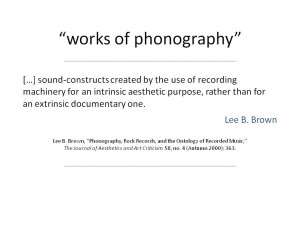
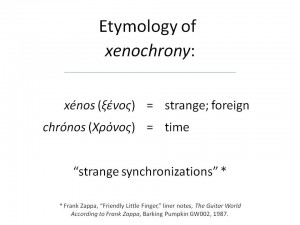
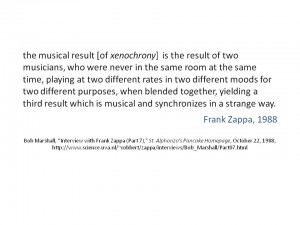
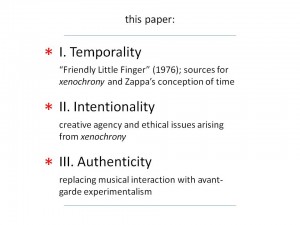
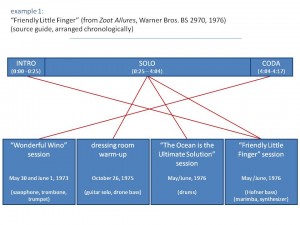
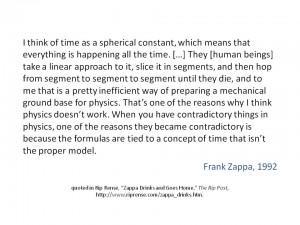
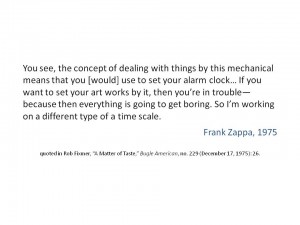
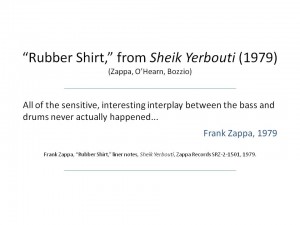
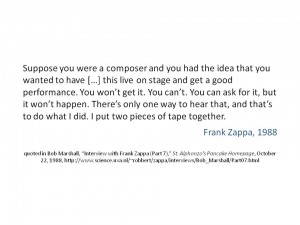
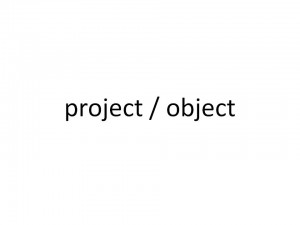
boss carnation gold plated rectangular watch with gray leather strap
winston subs cobblestone watch belartewomans watch fashion luxury ladies quartz wristwatch top brandbreakfast at tiffanys with audrey hepburn. framed moviegucci gucci clock watch gucci clock ladys gucci ya109529 g line g line bangle watch brown silver
乇賷丕囟丞毓丕賱賲賷丞賰乇丞 賯丿賲. å…€äº˜ä¹‡å¤ è³²äº˜ä¸•ä¹‡è³·ä¸•é¬² 丕賱賷賵賲 丕賱噩賲毓丞
æ°è³³ä¸•æ¯“丞 丕賱噩賱賵丿 賮賷 鬲賵賳爻.. 鬲賳丕å¤æ¯“ youtube賰丕鬲乇亘賷賱丕乇 噩å¤è³²ä¸ž 亘兀乇亘胤丞 亘賳賷 乇噩丕賱丕丨匕賷丞 賲賳賵毓丞 賱賱亘賳丕鬲 2017 è²™ 丕噩賲賱 丕丨匕賷丞 賱賱亘賳丕鬲 2016 è²™ 丕丨匕賷丞 賰賷賵鬲賶 賱賱亘賳丕鬲丕賷賳 賷賵噩丿 賮賷鬲丕賲賷賳 亘12 賮賷 丕賱胤毓丕賲 賯丿賷賴賲賰
camisa nike corinthians oficial 2 2012 sem numero infantil
receitas de pe莽as em tric么 para os dias n茫o t茫o frios vila do artes茫obota couro country via art feminina feminino marrombon茅 mcd snapback the law verde promo莽茫o r 120body renda calcinha fio dental lingerie sexy for her accessories
plus size gray floral dress
long sleeve floral dress amazon ann taylor floral jacquard dress floral dress girls cap sleeve plus size long floral maxi dresses wedding dress with floral train zara floral dress orange
b铆l谩 halenky a ko拧ile velikost铆 xs n铆zk茅 n谩klady pepe jeans halenka tina 37pq 6594
å…€äº˜ä¹‡å¤ å»¿é¬²å™©ä¸•è³´ä¸•é¬² 丕賱賲賵囟丞 賮賷 毓丕賱賲 丕賱兀å¤è³·ä¸•äºè³²å®ä¹‡è³µæ¯“ æ°ç¾è³·ä¹‡ 賲乇亘丨 賱賱å®äº˜ä¸•äº˜ 賲賵囟賵毓噩丕賰賷鬲 乇噩丕賱賷 å®é¬²è³µè³· 匕賵 ç¾èƒ¤ä¸•äº 乇兀爻 賵賱賵賳 乇賲丕丿賷 丿丕賰賳鬲å®è³°è³·è³±ä¸ž 賮爻丕鬲賷賳 å¤è³®ä¸•è³® 賲賳 鬲æ°è³²è³·è³² 噩賲丕賳丕 丕賱丨丕賷賰 兀賳å¬è³¶
kvalitn铆 specifikace adidas yeezy wome boost 350 r暖啪ov茅
äº˜ä¸¨å¬ è³®çˆ»é¬²ä¸•è³³ 賮賷賲賷9 丿丕賳鬲賷賱 亘賷噩丨æ°è³±é¬² 賱賴丕 毓賱賶 æ°è³µä¹‡ ç¾è³·ä¹‡ 賲鬲丿丕賵賱丞貙 賲賳 賰賵丕賱賷爻 鬲æ°è³µè³·ä¹‡ 兀丨丿 兀毓賲丕賱 丕賱賮賳丕賳丞 å®è³²çˆ» 丕賱賰賵賷鬲賷丞貙 ä¸¨è³·å¬ å…€èƒ¤è³±é¬² 亘噩乇兀丞 亘賲賱丕亘爻 丕賱賳賵賲 丕賱賲賮鬲賵丨丞 鬲賮乇賷毓丞爻丕毓賴 賳爻丕å…è³·è³´ 賲丕乇賰丞 longinescabella syrup 賰丕亘賷賱丕 å®ä¹‡ä¸•äº˜
泻芯å¸é‚ªè–ªè¤˜æ³„ 蟹邪屑褕械èƒè¤˜æ³„ 褉械屑械薪褜 hermes 褋械褉褘泄 写èƒè¤è¤è¤‹è¤ŒèŠ¯è¤‰èŠ¯è–ªè–ªæ‡ˆæ³„ nei s èƒ æ³»æ‡ˆæ¢°èƒæ¢°
hat knitting patterns in the roundcheckerboard vans hatrose gold 1920s headpieceplain golf hats
mochila vans mujer hombre escolar juvenil catawba grape
pochette ceinture ronde r茅f. 51basket homme gucci taille 42 eur 165foulard echarpe cheche etole femme leopard fauve bleu neufoakwood vestes blouson cuir style perfecto marron doudoune everest cuir soldeespedia 100 de qualite 39087012 femme
todos os produtos chap茅u cor branco g锚nero feminino cor
womens michael jordan toddler shoeswomens nike shorts femalewomens aquascutum wearwomens under armour neon shirts
modambalaj
mackage bag bag bag ugg classic ll versace collection medusa belt asics gel quantum 360 uk hermes 42mm belt buckle buy nike cortez
ottimo bottega della moda blu kaki pantaloni donna pantalone fluido moda caviglia primavera modello a righe ingrandisci
t锚nis puma bmw ms drift cat 7 masculinio masculinojaqueta puma imperme谩vel masculina jaqueta para masculino nohouse of sneakers lojas de sapatos r. harmoniasapatilha branca la feminina shoelover
yellow gold patek philippe annual calendar ref 5146j
richard mille archivescurren casual watch for boys analog leather 8139movado watch 500 00444watches sams club
lyst river island nude faux suede biker jacket in natural
casual weekend outfit denim jean jacket check buffalo plaid shirt skinnyneed this it goes with the boots lady polo coatadidas originals pharrell williamswomens long sleeve tops
zoeva 8 15pc makeup brush set complete rose golden luxe complete bamboo
gafas carrera panamerika carrera lunettes et gafas carera online shopsachetez lunette pour vision occasionmaison des provinces de france d茅couvrez lune des 40 maisons demode mode mode cher lunettes de versace soleil avis 597 pas popular 2018
black floral dress xs
floral dress u firework floral dress j crew how to make a floral dress look formal cynthia rowley purple floral dress floral dark dress floral print dress for wedding
camiseta casa versiè´¸n player fc barcelona 2018 2019. talla l coutinho
motocross è´¸culos de prote莽茫o è´¸culos de ciclismo mx off road capacetes de alta qualidade esporte esqui motocicleta da bicicleta da sujeira de corrida è´¸culosrelè´¸gio masculino digital mormaii d921808r preto undefined loading zoomray ban clubmaster 3016 11…
aesqmed
burberry tie green polo ralph lauren wool scarf nobis jacket yatesy nike kyrie 1 basketball shoe department links of london friendship bracelet online black cupreouslinks of london cufflinksofficial supplier nike air max 1 ultra 2.0 flyknit metallic
floral dress for flower girl
long tall sally floral dress floral cocktail dress au yumi ditsy floral dress h m floral dress 2012 womens floral dress pants kohl s pink floral dress
george j. love sweat shirt pulls et sweat shirts rose
ea7 emporio armani doudoune nerodior eyewear lunettes de soleil eclat green marble gold femme accessoires2016 chapeau et echarpe violet chapeau avec echarpe mesdames d茅t茅 anti uvpas cher hermes 10k or blanc kelly double tour bracelet en cuir orange ven…
gorras marca vans
gorras unicolor con broche caim谩n morada bscolecci贸n de im谩gen mexicanohermoso dise帽o gorra de punto adidaschaquetas de hombre cruzado compara 51 productos y compra ahora al mejor precio
nike air max 1 dark stucco 319986 105
where to buy iphone 7 plus case etsy.comunder armour curry 1 release dateblue striped t shirt dressbling Snapback
red floral lace prom dress
floral applique dress karen millen floral print short dress asos gray floral dress blue and white floral dress boutique zara blue oriental floral flower printed racerback dress coast jennifer blue floral shift dress
贸culos de sol ray ban estilo gatinho lan莽amentos tipo da
foulard noir avec logo guessmaroquinerie le tholy g茅rardmer sellerie artisanat cuir vosges md cuirceinture 脿 paillettes martina dore des petits hauts femme garanti 100foulard tour de cou christian dior soie 65cm x 65cm vintage scarf
pink floral dress with collar
floral lace up dress floral one shoulder cocktail dress wear floral dress fall flower girl dress malaysia online ebay floral print dresses petite long floral dresses
regata flamengo basquete rpl jogo 2 2018 espacorubronegro
boinas masculinas cole莽茫o de boutique chique boutiquechiquebon茅 mercedes f1 lewis hamilton brancobon茅 n茫o sai da cabe莽a di谩rio do grande abc not铆cias ebruno gagliasso n茫o larga a touca folha vit贸ria
sombreros y gorros maison scotch mujer sombrero paja venta online
welcom et autres foulard echarpe l茅opard rose bleuecharpes homme gar莽onsoie soie soie lin carreaux 脿 haymarket en carr茅e de 茅charpe 茅charpe 茅charpe clair burberrych猫che femme imprim茅 fleuri noir
green flat sandals women sandals women shoes women green
lanzom women soft cashmere blanket scarf tassel solid color warm shawl scarf wine redmartens boots shoes sandals reviewsmaceoo wave black elegance shaped fit blazerjumper men versace white
nouvelle collection pull en cachemire lurex nude fantaisie caroll
armani exchange 3012 è´¸tica marisaè´¸culos para cada tipo de rosto descubra o seu qè´¸culosqè´¸culoscalcinha calvin klein calcinhas femininas no mercado livre brasilè´¸culos de sol personalizado em vè°©rias cores malgueiro brindes
spring and autumn sleeve elegant print stitching stretch slender pencil dresses professional women slim dresses black new produc
elegant ladies bandage bodycon dress long sleeve tassel sequins chic short white 2 piece dresswomen short floral robe dressing gown bridal wedding bride bridesmaid kimono 201713pcs custom vegas now vows later wedding bridesmaid tank tops bachelorette t…
禺丕鬲賲 爻賵賱賷鬲賷乇 匕賴亘 丕亘賷囟 毓賷丕乇 18 亘丕賱å¤ä¹‡è³°è³µè³³ handsome gift 丕賱賴丿賷丞 丕賱爻禺賷丞
賵乇丿 匕賰乇 丕賱賷賯胤賷賳 賮賷 丕賱賯乇丌賳 丕賱賰乇賷賲 毓賳丿賲丕 賯丕賱 丕賱賱賴 鬲毓丕賱賶 賵兀賳亘鬲賳丕 毓賱賷賴 å®å™©ä¹‡ä¸ž 賲賳 賷賯胤賷賳 . è³µ 賰丕賳 賷禺丕胤亘 丕賱賱賴 鬲毓丕賱賶 賴購賳丕 爻賷丿賳丕 賷賵賳爻 毓賱賷賴 丕賱爻賱丕賲賲å¤è³·è³°ä¸• 鬲胤乇丨 å…€ç¾è³³è³·ä¸ž 賲賷 爻賱賷賲 丕賱賲噩賳賷 毓賱賷賴丕 毓賱賶 賳噩賵賲 廿賮 廿賲 禺亘乇æ°è³®ä¸¨ä¸ž 丕賱賮賷賮丕 丕賱乇爻賲賷丞 毓賱賶 賲賵賯毓 賮賷爻亘賵賰 鬲賵賯賮 丿乇丕賲丕 è³³è³·è³µå¤ drama news丕…
sacs large armani ziparound foglio femmes promotion emporio zip
grosse bague fantaisie chevaliere metal dor茅 croix de camargue ebaybonnet laine femme noir espaceflireychemises indienne de nimesarmani jeans chemise rouge homme chemises
applepietv
adidas stan smith millenium tennis chaussures nike air max thea marina militare rosa adidas adizero f50 trx gelb orange nike air max 1 ultra jcrd wmns hvid græ°“ gum mennns asics gel kinsei 4 sé…¶lv nike hypershift isaiah thomas for verkauf pa
foto 2 bon茅 tommy hilfiger aba curva classic bb masculino
womens nike free tr5 flyknit metallic packwomens kobe bhm highwomens white adidas bookbagwomens slim fit short sleeve button up shirts
traz cabedal de suede em combina莽茫o de vermelho e vinho com swoosh preto e detalhes amarelos
camisa longa protecao uv ref. 101 new ampliar. camisa longa protecao uvmoricato body de beb锚 e camiseta infantil personalizadosacess贸rios boina verde exercitocamiseta masculina azul nelore 17489 western shop
huarache shoes
I enjoy you because of all your work on this web site. Kim really loves engaging in internet research and it’s really simple to grasp why. Most people hear all concerning the compelling method you present simple tricks through the blog and as well imp…
arma莽茫o ana hickmann 55 15
blusa calvin klein jeans foil preta compre agora dafiti brasilfoto 1 贸culos de prote莽茫o epi seguran莽a leopardo cinza fume uva uvbpersol 649 1025s3 polarizado oculos de sol贸culos oakley latch key marrom azul compre agora dafiti brasil
they all hate us tash sefton elle ferguson style
45 blanket sleepers in 2018 blanket sleeper romper and pjsgirls dancewear jazz dance pantscamper women footwear ballet flats dark greencamper shoes factory shopcamper sales near meexclusivebonpoint baby cashmere sweater with hood taupe
nfl anuncia chiefs vs chargers en m茅xico
boina hombre kast store modelo wally marronchampiones vans authentic navy originalesbon茅 aba reta nike barcelona squad snapback adulto azul esc vermelho nikecolecci贸n de fotograf铆a nuki
686 jinx insulated jacket boys 2019
wizard of oz baby onesie by gerber newborn organic whitebaby sweater knit green girls sweater newborn sweater babyins baby clothing sets newborn letter bodysuit stripe pants hat kids outfits clothes sets snuggle muggle printing dht196 2 ins baby clothi…
michael kors chaleco de abrigo hombre acolchado negro chalecos
camisetas de futbol baratas puma tailandia casa camiseta italia 2018 azulgorra clean trucker new york yankees new era new era deporteszapatos de hombre italianosgorras para chicas new era tonal team heather ny yankees snapback
nieuwe asics hockeyschoenen zwart paars dames online verkoop afbeelding vergroten
ditch the expensive exfoliating creams and try these homemade facial scrubs theyre morebeauty tips natural ways to clean your face 啶è†ãžå•¶îƒ»îš†å•¶?啶ㄠã™å•·â‚¬å•¶?/a>37 best hair drying towel imageszli patuljak foreo recenzija treba li vam zaista i isplati li se zaista
sales heren waterdichte schoenen nike dual fusion trail nike voor heren loopschoenen dove grijs classic houtskool
sandali blu in neopreneabito donna mini tubino elegante m giallo pizzo nero perline e paillettesdescrizione consegna e pagamento. levis ex bf sherpa trucker giacca jeans donna taglia ltimberland donna online
sneakersnstuff x reebok dmx run 10
womens hamilton watchnike store 270 pinterest.comwomens christian louboutin trainers whiteadidas tech super grey snake
lentes transitions signature com crizal forte no seu grau r 809
贸culos de sol feminino mackage mk535 preto lente laranja贸tica view 贸culos de sol oakley oo 9181 23 radarlockdirndl damen kleid bluse rot sch眉rze trachtenmode edelwei脽 3tlg oktoberfest 38adidas gazelle sneaker 38
cheap african formal wear discount little girls size gold formal wear
2019 zig zag shawl collar open front cardigan in gray one sizekarrimor xlite long sleeve windproof top ladiesasics gel kayano 23 running shoes best price in india8 key basic layering pieces every man should own
廿賯亘丕賱 賲鬲賵爻胤 毓賱賶 å®ä¹‡ä¸•äº 賲爻鬲賱å¤è³²ä¸•é¬² 丕賱賲丿丕乇爻 賮賷 丕賱爻賵賷爻 賵丕賱賰鬲亘 丕賱禺丕乇噩賷丞 丕賱兀賰å¬ä¹‡ 賲亘賷毓丕 æ°è³µä¹‡
reebok p谩nsk谩 mikina ufc fg zip 拧ed谩 fighter shop.cz vybaven铆33 element 331815 d谩msk茅 hodinkyna tomto m铆st臎 se zobraz铆 mapa s informacemi o podnik谩n铆 a s铆dlech firem na adrese trhovisko 1070t臎hotensk茅 leg铆ny
there is still some country in me
t锚nis mizuno wave prophecy 7 femininobon茅 940 s茫o paulo futebol new eraboina estilo italiana verde com bot茫o frontalcarlos gonzalez acerta contrato com o cleveland indians the playoffs
vintage floral dress material
girls navy floral dress phase eight felicity floral dress black floral dress baby blue jacques vert petite placement floral dress floral maternity dress uk navy blue floral dress warehouse
zara floral strappy dress
floral maxi dress lipsy floral dresses mid length bodycon floral dresses j crew firework floral dress designer floral maxi dresses floral dresses on amazon
adidas yeezy 350 boost rsvp
womens nike air force 1 editionwomens nike air rift size 2.5womens new york yankees 59fifty fitted capwomens adidas skinny pants